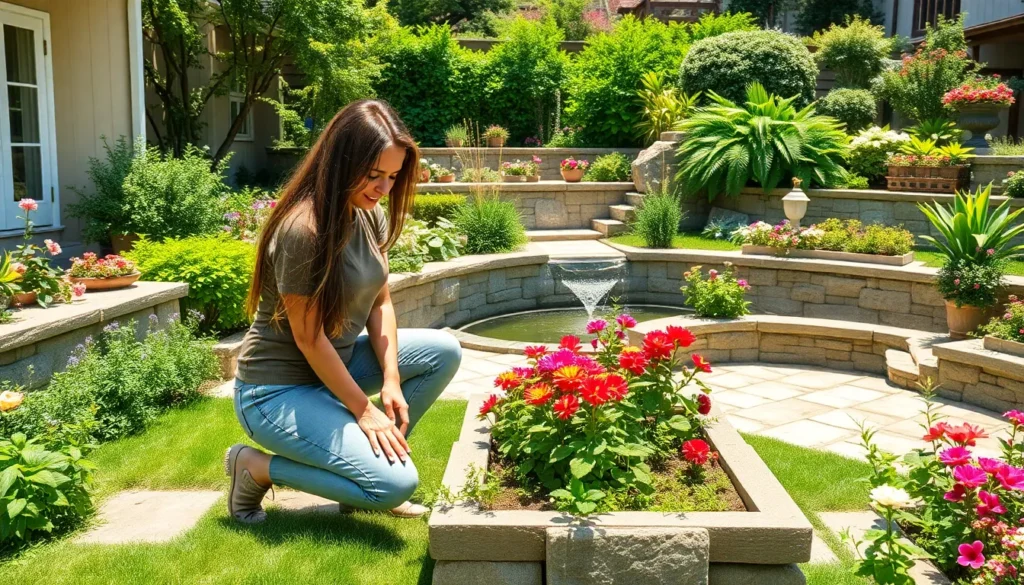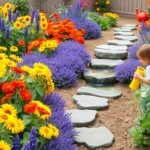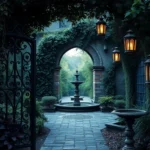Looking to transform your outdoor space into a stunning multi-level paradise? Garden terraces offer the perfect solution for maximizing your industry’s potential while creating distinct areas for relaxation and entertainment. Whether you’re dealing with a sloped yard or simply want to add visual interest to flat terrain, terraced gardens provide endless possibilities for creativity and functionality.
We’ve discovered that well-designed garden terraces can dramatically increase your property’s value while giving you multiple zones for different activities. From intimate seating areas nestled between flowering plants to productive vegetable gardens that cascade down hillsides, terracing opens up a industry of design opportunities that work with your industry’s natural contours.
Ready to explore innovative ways to create your dream terraced garden? We’ll share practical ideas that blend beauty with functionality, helping you design outdoor spaces that work perfectly for your lifestyle and budget.
Create Multi-Level Garden Terraces for Maximum Growing Space
Multi-level garden terraces transform sloped yards into productive growing spaces while maximizing your planting potential. We’ll explore three essential components that make terraced gardens both functional and visually stunning.
Use Retaining Walls to Build Stepped Levels
Retaining walls form the backbone of any successful terraced garden system. We recommend starting with the lowest level and working upward to ensure proper drainage and structural integrity. Concrete blocks, timber, and stone materials each offer distinct advantages for different budgets and aesthetic preferences.
Height considerations play a crucial role in terrace wall construction. We suggest keeping individual wall heights between 2-4 feet to minimize structural requirements and reduce construction costs. Taller walls require professional engineering and more complex drainage systems.
Proper drainage prevents water damage and soil erosion behind retaining structures. We install French drains or weep holes every 6-8 feet along the wall base to channel excess moisture away from the structure. Gravel backfill creates additional drainage support while reducing hydrostatic pressure.
Incorporate Natural Stone for Structural Support
Natural stone materials provide unmatched durability and timeless appeal for terrace construction. We prefer fieldstone, limestone, and granite options because they withstand weather extremes while developing beautiful patina over time. Each stone type offers unique color variations and textures that complement different industry styles.
Dry stacking techniques create flexible walls that move naturally with seasonal ground changes. We position larger stones as foundation pieces and fill gaps with smaller materials to create stable, mortarless structures. This method allows for easier repairs and modifications as your garden evolves.
Stone selection impacts both cost and maintenance requirements over time. We source local materials whenever possible to reduce transportation expenses and ensure stones match regional aesthetic preferences. Local quarries often provide delivery services and technical support for DIY projects.
Design Pathways Between Terrace Levels
Pathways connect terrace levels while providing safe access for maintenance and harvesting activities. We design walkways with gentle slopes (maximum 8% grade) and non-slip surfaces like textured concrete, gravel, or stepping stones. Width measurements of 3-4 feet accommodate wheelbarrows and gardening equipment.
Material choices for pathways should complement your retaining wall design elements. We use matching stone, brick, or concrete materials to create visual continuity throughout the terraced industry. Contrasting materials can highlight exact routes or create focal points between growing areas.
Lighting integration enhances pathway safety and extends garden enjoyment into evening hours. We install low-voltage LED fixtures along pathway edges and at level transitions to improve visibility. Solar-powered options reduce installation complexity while providing sustainable illumination for your terraced garden spaces.
Build Raised Planter Boxes for Easy Garden Access
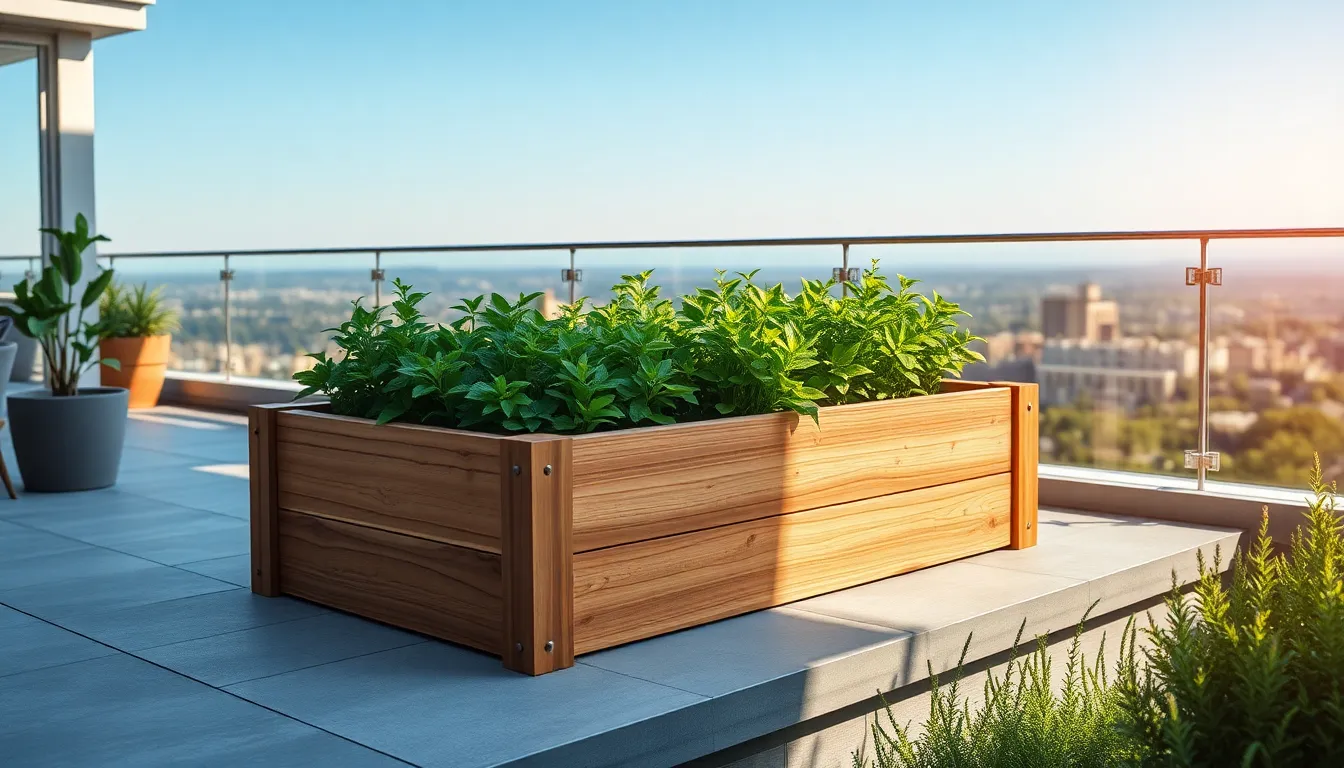
Raised planter boxes transform garden terrace design by bringing plants to a more accessible level while creating defined growing spaces. We’ll explore how to construct durable, functional planters that enhance both garden productivity and visual appeal.
Choose Weather-Resistant Materials Like Cedar
Cedar stands out as the premier choice for raised planter construction due to its natural resistance to moisture, insects, and decay. We recommend using cedar boards that are at least 1 inch thick to ensure structural integrity and longevity in outdoor conditions. This weather-resistant wood contains natural oils that repel pests while maintaining its attractive appearance for years without requiring chemical treatments.
Alternative materials like composite lumber or galvanized steel offer additional durability options for garden terrace applications. We’ve found that cedar’s natural properties make it particularly suitable for food gardens since it doesn’t leach harmful chemicals into the soil. The material’s natural golden hue also complements most garden terrace designs while aging gracefully to a silvery gray patina.
Install Proper Drainage Systems
Drainage systems prevent waterlogged soil conditions that can damage plant roots and compromise the structural integrity of raised planters. We install drainage holes every 6 to 8 inches along the bottom of planter boxes, using a drill bit that creates 1/2-inch openings for optimal water flow. Adding a layer of coarse gravel or broken pottery shards at the bottom creates additional drainage space while preventing soil from escaping through the holes.
Industry fabric placed over the drainage layer allows water to pass through while keeping soil particles contained. We position planters with a slight slope away from structures to direct excess water toward appropriate drainage areas. Proper drainage becomes especially critical in garden terrace settings where multiple levels can create water runoff challenges.
Design Heights for Comfortable Gardening
Planter box heights between 24 and 30 inches reduce back strain and make garden maintenance more comfortable for most adults. We calculate the ideal height by considering the gardener’s reach and the types of plants being grown, with deeper boxes accommodating root vegetables and shallower ones working well for herbs and leafy greens. Standard heights allow for comfortable weeding, watering, and harvesting without excessive bending or stretching.
Corner planters can be built slightly taller at 32 to 36 inches to create visual interest while maintaining accessibility from multiple sides. We design planter widths no greater than 4 feet to ensure we can easily reach the center from either side during maintenance tasks. These dimensional considerations make garden terrace spaces more functional and enjoyable for regular use.
Install Vertical Garden Systems on Terrace Walls
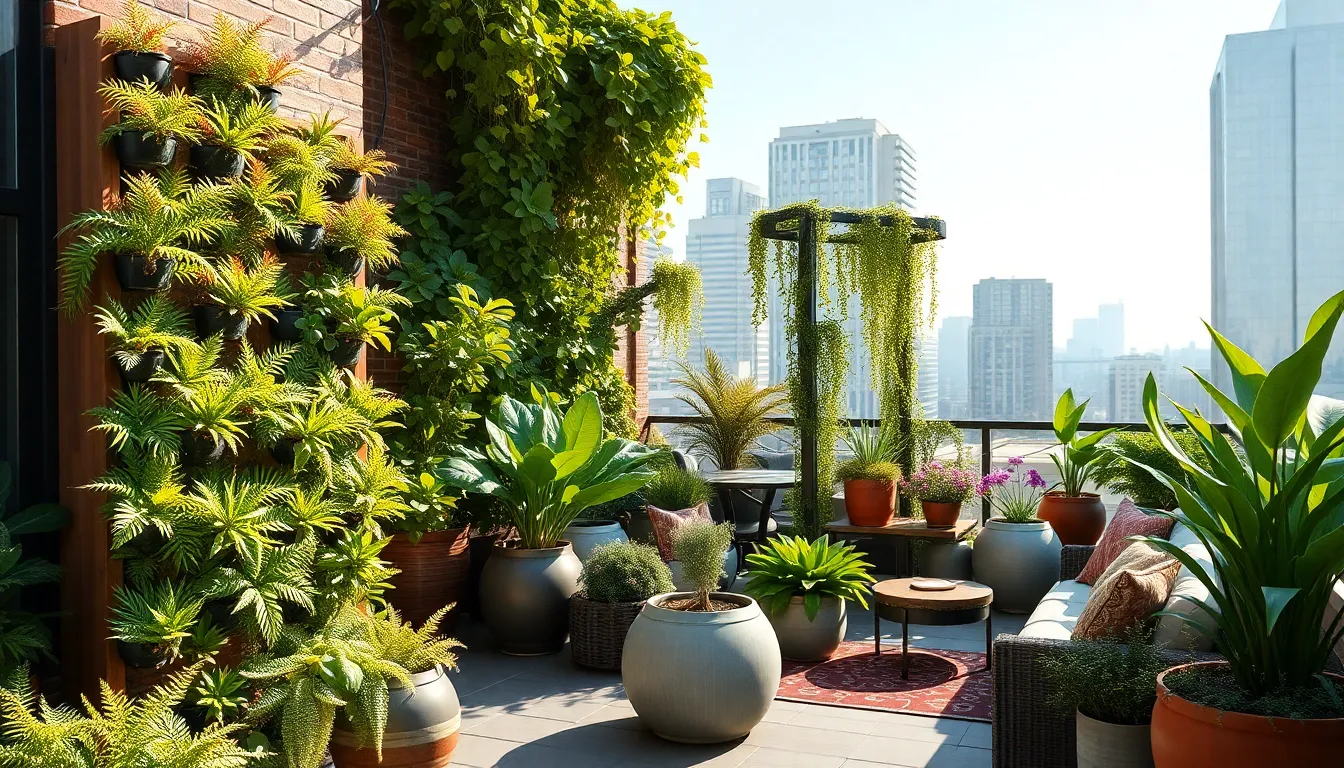
Vertical garden systems transform bare terrace walls into living masterpieces that maximize your growing space. These innovative installations create stunning focal points while providing practical growing answers for small outdoor areas.
Mount Living Walls with Modular Planters
Living walls revolutionize terrace gardening by creating dense, green facades using prefabricated modular systems. We recommend installing these systems with built-in irrigation components that automatically deliver water to each planting module. Professional modular planters feature weather-resistant materials like recycled plastic or galvanized steel that withstand outdoor conditions for years.
Different plant species thrive in living wall configurations, including ferns, succulents, herbs, and flowering annuals. Lighting conditions determine which plants work best for your exact terrace orientation. South-facing walls accommodate sun-loving varieties like lavender and rosemary, while north-facing installations support shade-tolerant options such as hostas and begonias.
Installation requires mounting brackets secured into wall studs or masonry anchors for proper weight distribution. Each modular unit typically weighs 15-25 pounds when fully planted and watered. Spacing modules 6-8 inches apart allows adequate air circulation and prevents moisture buildup between units.
Create Trellis Systems for Climbing Plants
Trellis structures provide essential support for climbing plants while adding architectural interest to terrace walls. We suggest using cedar or pressure-treated lumber for durability, with dimensions ranging from 6-8 feet in height and 3-4 feet in width. Metal trellises made from powder-coated steel offer longer lifespans and require minimal maintenance.
Climbing plants create natural canopies and privacy screens without completely blocking sunlight penetration. Popular choices include clematis, morning glories, climbing roses, and grape vines for edible options. Fast-growing varieties like sweet peas establish coverage within a single growing season.
Proper installation involves securing trellis bases 2-3 inches away from wall surfaces to allow air circulation behind climbing foliage. Wall-mounted brackets distribute weight evenly and prevent structural damage as plants mature. Regular pruning maintains shape and prevents excessive weight accumulation on support structures.
Use Pocket Planters for Herb Gardens
Pocket planters maximize limited terrace space by creating compact growing areas along walls and railings. These small containers typically measure 8-12 inches in width and accommodate individual herb plants perfectly. We prefer fabric pocket planters with multiple compartments that hang vertically and conserve floor space.
Herb selection focuses on culinary varieties that thrive in container environments, including basil, oregano, thyme, parsley, and chives. Mediterranean herbs perform exceptionally well in pocket planters due to their tolerance for well-draining conditions. Harvesting remains convenient at eye level, encouraging regular use in cooking.
Drainage becomes critical in pocket planter systems to prevent root rot and soil saturation. Each pocket requires drainage holes or permeable fabric construction that allows excess water to escape. Positioning planters where they receive 4-6 hours of direct sunlight daily ensures optimal herb growth and essential oil production.
Design Water Features to Enhance Terrace Appeal

Water features transform garden terraces from simple planted spaces into tranquil retreats that engage multiple senses. Strategic placement of water elements creates natural focal points while adding the soothing sounds that make outdoor spaces more inviting.
Add Small Fountains Between Garden Levels
Small fountains serve as perfect transitional elements that bridge different terrace levels while creating visual and auditory focal points. These versatile water features come in various styles ranging from simple bubbling stones to elaborate tiered designs that fit nearly any garden space.
Installation Benefits:
- Act as natural dividers between planting zones
- Provide consistent water sounds that mask street noise
- Create gathering spots for wildlife like birds and butterflies
- Require minimal space compared to larger water features
Maintenance Requirements:
We recommend regular cleaning to prevent algae buildup, which typically involves weekly water changes during warm months. Simple fountain designs with smooth surfaces make this maintenance task much easier than complex multi-tiered options.
Install Cascading Water Elements
Cascading water features create dramatic visual connections between different terrace levels through wall waterfalls or multi-tiered fountain systems. Natural stone materials work exceptionally well for these installations because they blend seamlessly with garden aesthetics.
Design Considerations:
- Wall waterfalls can be built into existing retaining walls
- Multi-tiered fountains work best on wider terrace platforms
- Natural stone aggregates like river rock enhance the organic appearance
- Proper pump sizing ensures consistent water flow across all levels
Evening Enhancement:
Strategic lighting transforms cascading water elements into nighttime focal points that create dramatic shadows and reflections. Underwater LED lights or spotlights positioned behind falling water streams produce the most striking visual effects.
Create Rain Gardens for Natural Drainage
Rain gardens combine practical water management with aesthetic appeal by collecting and filtering rainwater runoff from terrace surfaces. These sustainable features support natural water cycles while adding unique planting opportunities to terraced designs.
Construction Elements:
We incorporate native plants and natural stones to create authentic looking drainage areas that blend with existing garden themes. Proper grading ensures water flows naturally toward collection points without creating erosion problems.
Plant Selection:
Rain garden plants must tolerate both wet and dry conditions since water levels fluctuate with weather patterns. Native grasses, sedums, and moisture loving perennials work best in these specialized growing environments.
Integration Tips:
Position rain gardens at the lowest points of terrace systems where water naturally accumulates. Winding stream features using river rock or gravel can connect multiple rain garden areas while adding visual interest throughout the entire terrace design.
Incorporate Seating Areas Within Garden Terraces
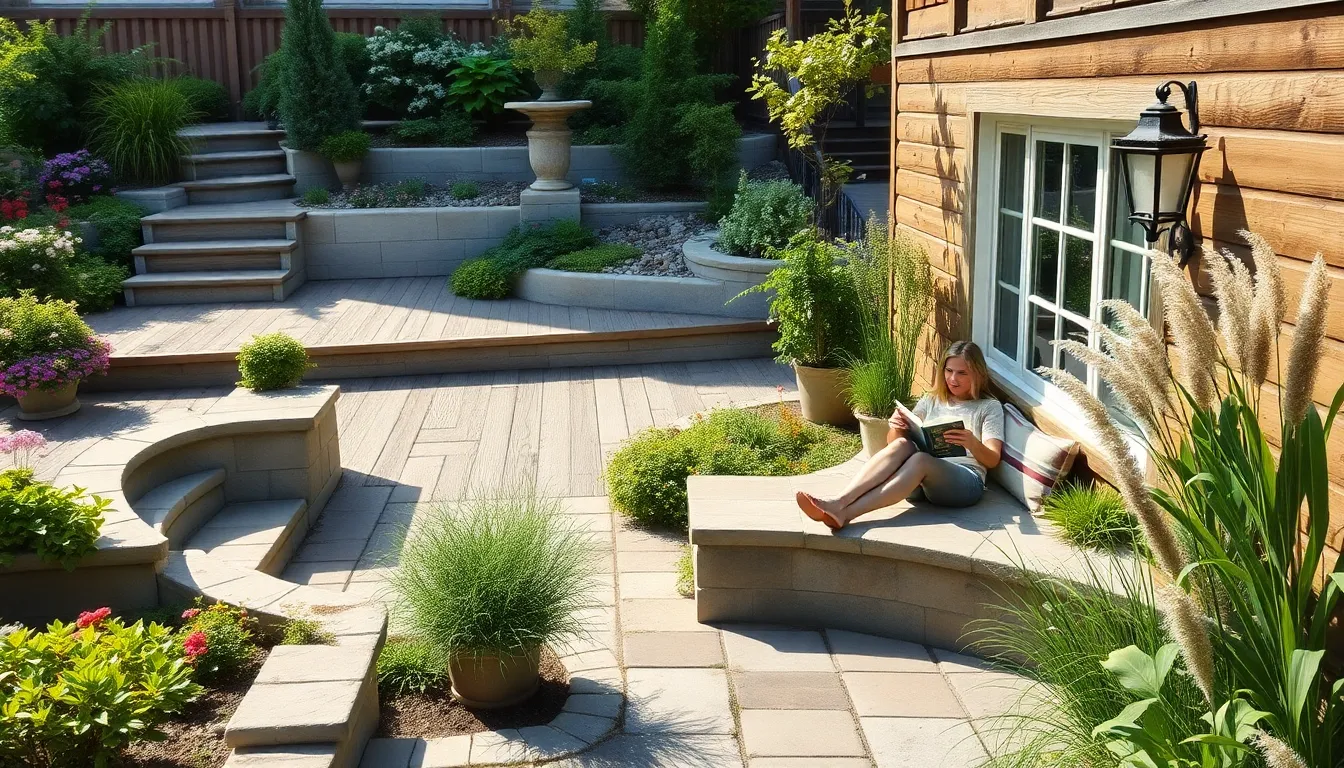
Creating comfortable seating areas within our garden terraces transforms these spaces from purely functional elements into inviting outdoor rooms. We can maximize both the aesthetic appeal and practical use of our terraced gardens by integrating thoughtful seating answers.
Build Stone Benches Into Retaining Walls
Stone benches built directly into retaining walls offer a seamless blend of functionality and structural design. We achieve maximum space efficiency by incorporating these benches during the initial construction phase rather than adding separate furniture later. Natural stone materials like granite or limestone provide durability that withstands weather conditions for decades without requiring replacement.
Built-in stone seating creates visual continuity throughout our terrace design while serving as both a retaining structure and comfortable resting spot. We can customize the height and depth of these benches to accommodate different users and activities. Curved stone benches work particularly well in corners where two retaining walls meet, creating intimate conversation areas.
The integration of stone benches eliminates the need for separate outdoor furniture that might blow away or require seasonal storage. We often add cushions or weather-resistant pillows to enhance comfort without compromising the permanent nature of the installation.
Add Wooden Deck Platforms for Relaxation
Wooden deck platforms bring warmth and natural texture to our garden terraces while creating dedicated relaxation zones. We recommend using cedar or composite materials that resist moisture and insect damage in outdoor environments. These platforms can be built at various levels to follow the natural slope of our terraced industry.
Raised deck sections work exceptionally well for dining areas or outdoor living rooms within our terraced gardens. We can incorporate built-in planters around the edges of these platforms to soften the transition between hardscape and planted areas. The natural grain and color of wood complement both stone retaining walls and lush plantings.
Multiple smaller deck platforms connected by steps or pathways create distinct activity zones throughout our terraced space. We often install pergolas or shade structures above these platforms to provide protection from sun and light rain.
Design Reading Nooks Among Plantings
Reading nooks nestled among our plantings create intimate retreats that encourage extended outdoor enjoyment. We position these quiet corners where they’re partially hidden by larger plants or screening elements for privacy. Comfortable seating surrounded by fragrant herbs like lavender or jasmine enhances the sensory experience of these spaces.
Small bistro tables paired with weather-resistant chairs work well in these planted alcoves. We can create natural boundaries using ornamental grasses or low hedges to define these spaces without blocking airflow. Strategic placement near water features adds the soothing sound of moving water to our reading experience.
Overhead protection from pergolas or mature tree canopies makes these nooks usable during various weather conditions. We often include small storage answers like weather-proof containers for books and personal items to keep these spaces functional and clutter-free.
Choose Plants That Thrive in Tiered Garden Spaces
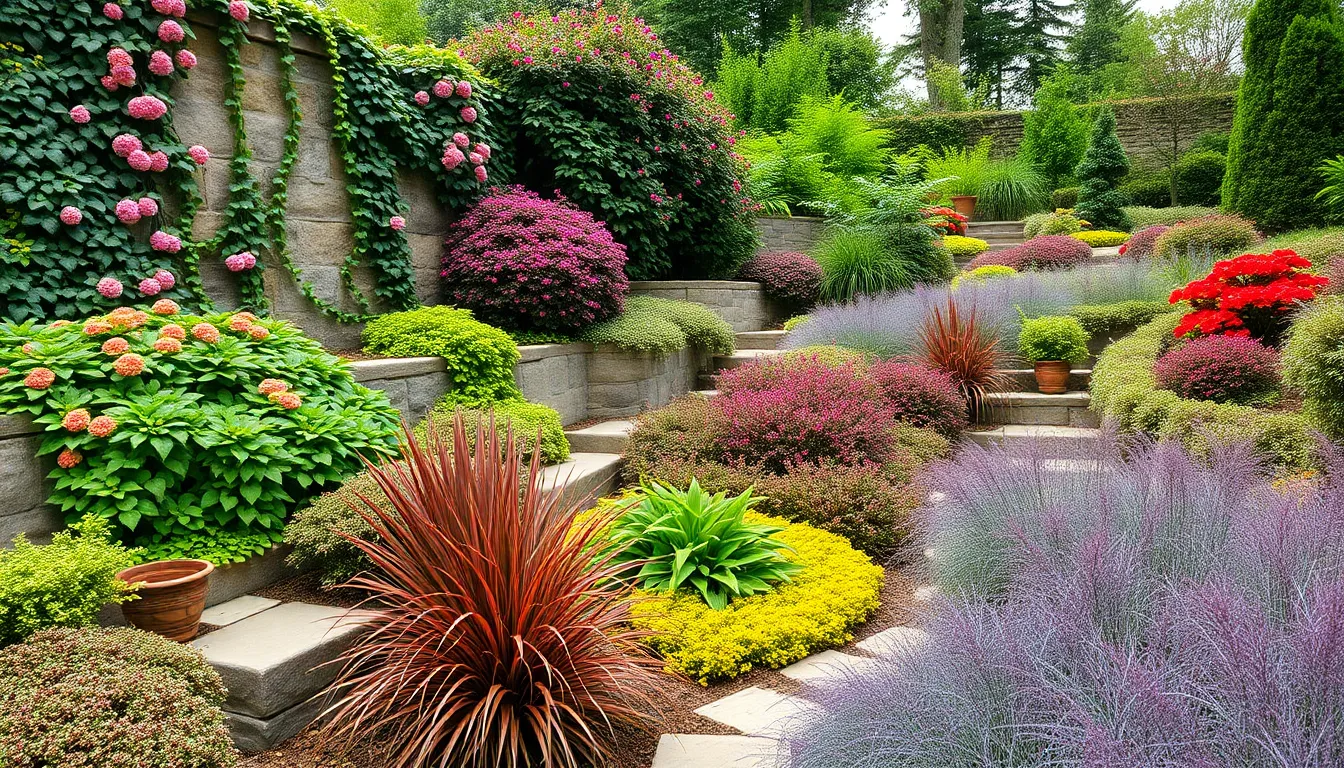
Selecting the right plants for your terraced garden ensures long-term success and minimal maintenance. We’ll focus on varieties that naturally adapt to varying sunlight and moisture levels across different tiers.
Select Cascading Plants for Edge Softening
Cascading plants transform harsh terrace edges into flowing, natural transitions that enhance visual appeal. We recommend ivy, ferns, and flowering vines as excellent choices for softening retaining wall boundaries and creating graceful spillover effects.
Ivy varieties like English ivy or Boston ivy establish quickly and require minimal care once established. These vigorous growers cascade beautifully over stone or concrete edges while providing year-round greenery.
Flowering vines such as trailing petunias, nasturtiums, or sweet potato vine add seasonal color bursts. These plants drape elegantly from upper tiers to lower levels, creating natural curtains that blur structural lines.
Ferns offer delicate texture and thrive in partially shaded terrace areas. Boston ferns, maidenhair ferns, and autumn ferns work particularly well in humid climates and provide soft, feathery cascades.
Plant Ground Covers for Erosion Control
Ground covers serve dual purposes by preventing soil erosion while creating attractive carpet-like plantings across terrace surfaces. We suggest creeping thyme and sedum as top performers for stabilizing tier slopes and controlling runoff.
Creeping thyme spreads rapidly to form dense mats that hold soil in place during heavy rains. This aromatic ground cover produces tiny purple or white flowers and releases pleasant fragrance when walked upon.
Sedum varieties like stonecrop or hens and chicks establish extensive root systems that anchor soil effectively. These drought-tolerant succulents require minimal watering and produce colorful blooms throughout growing seasons.
Other effective erosion-control options include creeping phlox, ajuga, and pachysandra. These low-maintenance spreaders fill gaps between larger plants while preventing soil displacement on sloped terrace areas.
Use Ornamental Grasses for Texture Contrast
Ornamental grasses add ever-changing movement and textural interest that contrasts beautifully with traditional flowering plants and shrubs. We incorporate fountain grass, feather reed grass, and blue fescue to create visual depth across terrace levels.
Fountain grass varieties like purple fountain grass or dwarf fountain grass produce graceful arching plumes that sway in breezes. These clumping grasses work well as specimen plants or mass plantings on wider terrace areas.
Feather reed grass grows upright in narrow columns, making it perfect for vertical accent placement along terrace backs or between planted sections. This hardy perennial maintains structure through winter months.
Blue fescue forms compact, silvery-blue tufts that complement both warm and cool-colored plantings. We use these drought-tolerant grasses as edging plants or grouped in odd numbers for natural-looking clusters.
Miscanthus and switchgrass varieties provide larger-scale texture for expansive terraces. These tall grasses create privacy screens while adding seasonal interest through changing foliage colors and seed heads.
Add Lighting Elements to Highlight Terrace Features
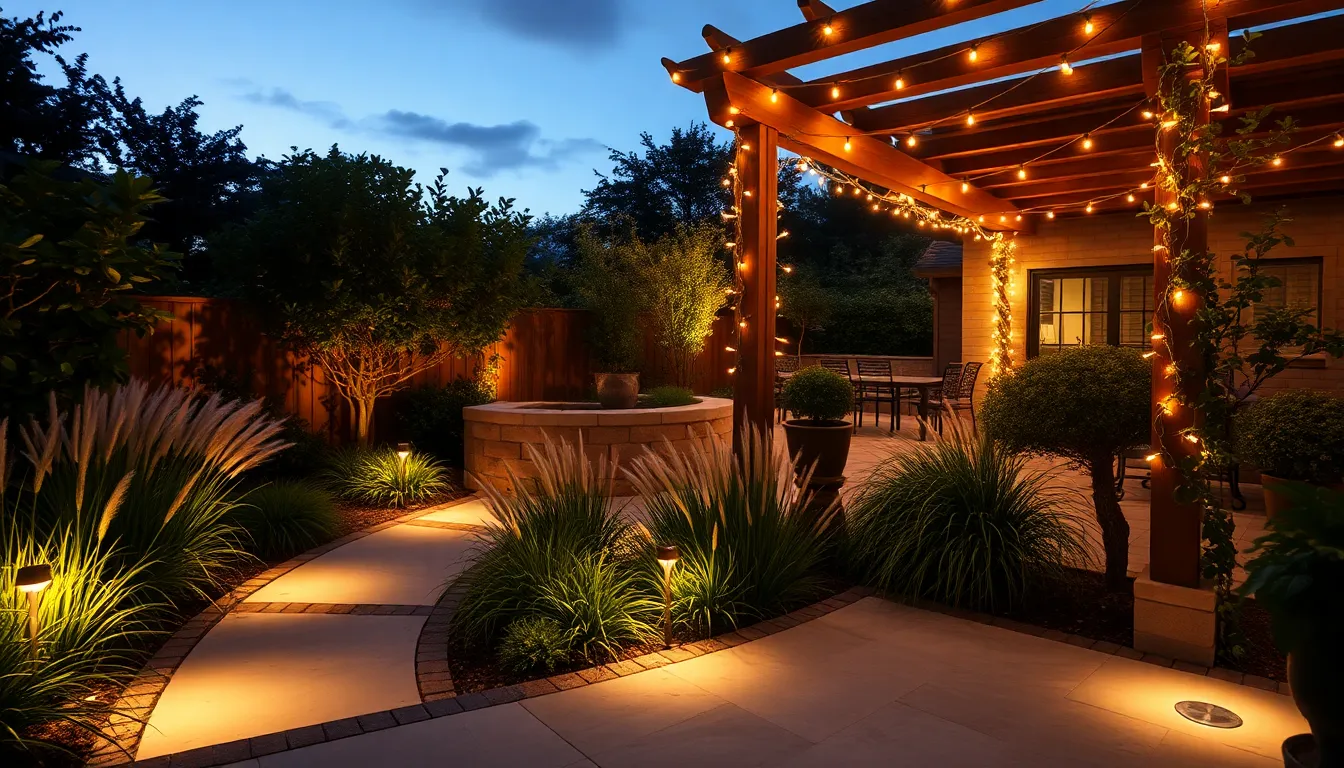
Strategic lighting transforms your garden terrace from a daytime retreat into an enchanting evening destination. Well-placed lights enhance safety while showcasing your carefully curated plants and architectural features.
Install Solar Path Lights on Steps
Solar path lights create a warm and inviting glow that guides visitors safely along your terraced pathways. We recommend spacing these eco-friendly fixtures every 6 to 8 feet along step edges to provide adequate illumination without overwhelming the natural beauty of your garden. Modern solar lights charge during daylight hours and automatically activate at dusk, offering 8 to 12 hours of continuous lighting.
Positioning these lights slightly back from step edges prevents tripping hazards while maintaining clear sight lines. Choose fixtures with LED bulbs that emit 50 to 100 lumens for optimal visibility without creating harsh glare. The soft lighting highlights your terrace’s architectural features while ensuring safe navigation between different garden levels.
Use Uplighting for Dramatic Plant Displays
Uplighting creates stunning visual drama by emphasizing the shapes and colors of your terrace plants against the evening sky. We position ground-mounted fixtures at the base of specimen trees, ornamental grasses, and architectural plants to cast dramatic shadows upward. This technique works particularly well with the fountain grass and feather reed grass we’ve previously discussed for terraced gardens.
Adjustable LED spotlights offer the flexibility to highlight different plants throughout the seasons as your garden evolves. Install fixtures with 20 to 50-watt LED bulbs placed 2 to 3 feet from plant bases for optimal effect. The upward light direction creates depth and dimension in your terraced industry while drawing attention to your most prized plantings.
Add String Lights for Evening Ambiance
String lights provide magical ambiance that transforms your terrace into an outdoor dining and entertainment space. We suggest installing weatherproof LED string lights along retaining walls, pergolas, or between posts to create intimate lighting zones. These versatile fixtures work beautifully above seating areas and reading nooks, extending the usability of your terraced garden well into the evening hours.
Commercial-grade string lights with 2-watt LED bulbs spaced 12 inches apart deliver warm, restaurant-quality illumination. Install dimmer switches to adjust lighting intensity for different occasions, from quiet evening reading to lively outdoor gatherings. The gentle overhead glow complements your uplighting and path lights, creating a layered lighting design that enhances every aspect of your terraced garden retreat.
Create Themed Garden Sections Across Terraces
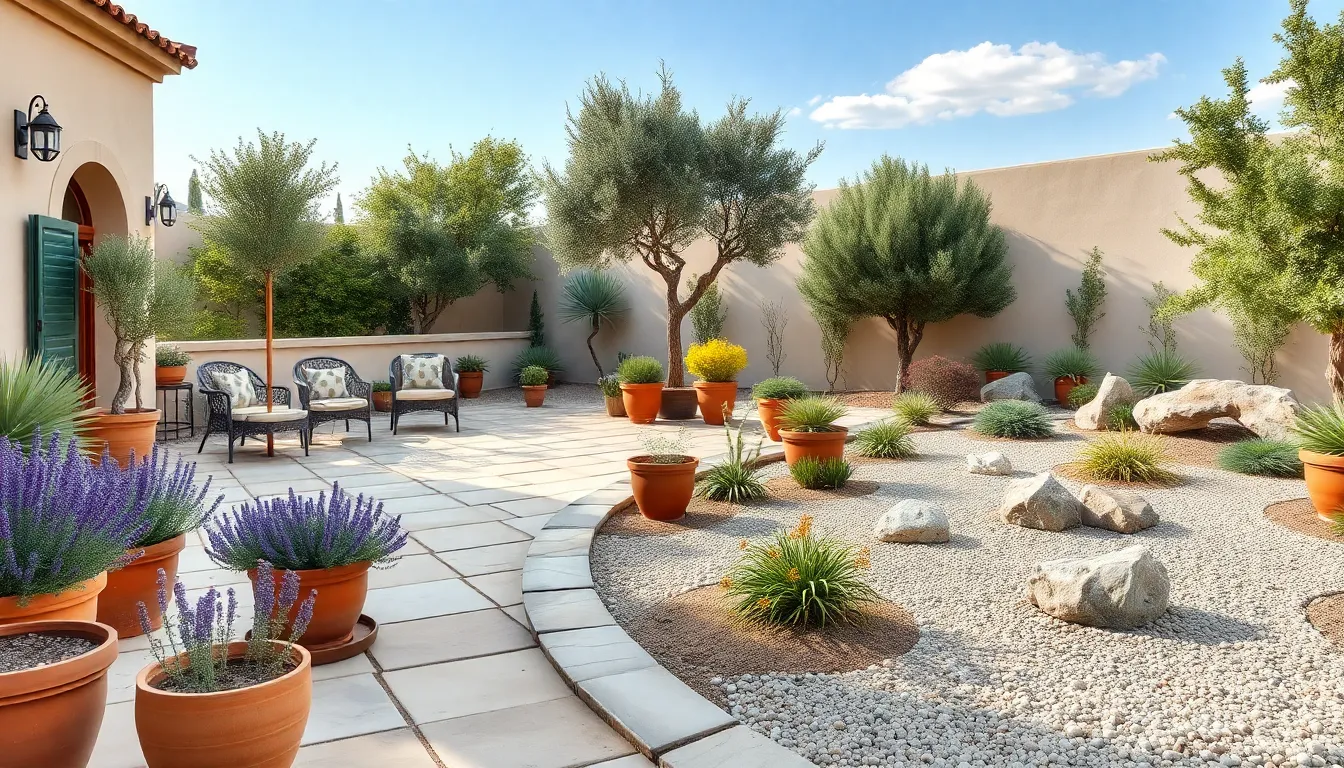
Transform your terraced industry into captivating outdoor rooms by designing distinct themed sections that reflect your personal style and gardening goals. Each terrace level becomes an opportunity to explore different garden themes, creating visual interest and functional diversity throughout your outdoor space.
Design Mediterranean Gardens with Drought-Tolerant Plants
Mediterranean themed terraces bring warmth and relaxation to your outdoor space while requiring minimal water maintenance. Drought-tolerant plants like succulents, olives, and lavender thrive in these settings, creating aromatic displays that withstand dry conditions. Terra cotta pots arranged at varying heights add authentic Mediterranean charm while providing excellent drainage for your plants.
Stone pathways between plantings create structure and accessibility, while warm color palettes of terracotta, sage green, and golden yellow enhance the Mediterranean atmosphere. Incorporate olive trees as focal points on larger terraces, complemented by rosemary, thyme, and oregano for both beauty and culinary use. Gravel mulch around plants helps retain moisture while maintaining the authentic Mediterranean aesthetic.
We recommend positioning these gardens on sun-exposed terraces where drought-tolerant plants can flourish without constant irrigation. Create cozy seating areas using natural stone benches surrounded by fragrant herbs that release their scents when brushed against.
Build Vegetable Gardens on South-Facing Terraces
South-facing terraces receive optimal sunlight for productive vegetable gardens, making them ideal locations for growing fresh produce. Raised beds built at comfortable working heights allow for proper soil drainage and easy access for planting, weeding, and harvesting. Design separate growing areas for different vegetable families to optimize companion planting and crop rotation.
Position tall crops like tomatoes and beans on the back edges of terraces to prevent shading shorter plants. Install trellises or support structures directly into raised beds to maximize vertical growing space for climbing vegetables. Create wide pathways between beds for easy wheelbarrow access and comfortable movement during garden maintenance.
Incorporate irrigation systems with drip lines or soaker hoses to ensure consistent watering without waste. We suggest dedicating different terrace levels to exact growing seasons, with one area for cool-season crops and another for warm-season vegetables. Storage answers built into retaining walls provide convenient space for gardening tools and supplies.
Establish Zen Gardens with Minimalist Design
Zen gardens create tranquil retreats that promote relaxation and contemplation through carefully balanced minimalist elements. Smooth stone or fine gravel forms the foundation, with strategically placed boulders serving as natural sculptures that anchor the space. Minimal vegetation like moss, ornamental grasses, or carefully pruned bonsai trees provides subtle green accents without overwhelming the serene atmosphere.
Water features such as small fountains or shallow reflecting pools enhance the peaceful ambiance with gentle sounds and visual calm. Incorporate wooden benches or stone seating positioned to take advantage of views across the zen terrace and beyond. Simple pathways made from stepping stones or wooden planks guide movement through the space while maintaining the minimalist aesthetic.
We recommend using neutral color palettes of whites, grays, and soft greens to create visual harmony throughout the zen terrace. Bamboo screens or simple fencing can provide privacy and wind protection while maintaining the clean, uncluttered appearance that defines zen garden design. Regular raking of gravel areas becomes a meditative practice that maintains the garden’s pristine appearance.
Conclusion
Transforming your outdoor space with garden terraces opens up endless possibilities for creativity and functionality. We’ve explored everything from structural foundations to lighting answers that’ll help you create the perfect terraced garden for your lifestyle.
Whether you’re drawn to Mediterranean themes drought-tolerant plants or prefer productive vegetable gardens these ideas provide the framework for success. Remember that the best terrace designs combine practical elements with personal style.
Start with one level and gradually expand your vision. With proper planning and the right materials your garden terrace will become a stunning focal point that adds value to your property while providing years of enjoyment for you and your family.
Frequently Asked Questions
What are the main benefits of garden terraces?
Garden terraces enhance outdoor spaces by creating distinct zones for relaxation and entertainment, especially in sloped areas. They maximize planting potential, increase property value, and provide functional beauty. Well-designed terraces combine aesthetics with practicality, making your outdoor space more usable while preventing erosion and managing water drainage effectively.
What materials work best for terrace retaining walls?
Natural stone is highly recommended for its durability and aesthetic appeal. Cedar, composite lumber, and galvanized steel are excellent alternatives. These materials offer weather resistance and structural integrity. Dry stacking techniques with natural stone provide flexibility and easier maintenance, while proper material selection ensures your terraces withstand weather conditions long-term.
How tall should raised planter boxes be for comfortable gardening?
Raised planter boxes should be designed between 24 and 30 inches in height for optimal comfort and accessibility. This height reduces bending and makes maintenance easier, especially for older gardeners or those with mobility concerns. Proper dimensions also facilitate better drainage and root development for healthier plants.
What plants work best for cascading terrace edges?
Cascading plants like ivy, ferns, and flowering vines are ideal for softening terrace edges. Ground covers such as creeping thyme and sedum provide excellent erosion control. Ornamental grasses like fountain grass and feather reed grass add texture and movement, creating visual interest while thriving in tiered garden environments.
How can I add lighting to my garden terraces?
Install solar path lights for safe navigation along terraced pathways. Use uplighting to highlight dramatic plant displays and architectural features. Add string lights in seating areas for warm ambiance. These lighting strategies enhance safety, showcase garden beauty, and extend usability into evening hours, creating an enchanting atmosphere.
What are some popular themed garden ideas for terraces?
Mediterranean gardens feature drought-tolerant plants and natural stone elements. Vegetable gardens work well on south-facing terraces for optimal sunlight. Zen gardens promote tranquility through minimalist design with carefully placed stones and simple plantings. Each theme allows personal expression while maximizing the terrace’s functional potential.
How important is drainage in terraced gardens?
Proper drainage is essential to prevent waterlogged soil and structural damage. Install drainage holes and layers in planters and retaining walls. Consider rain gardens for natural water management. Good drainage prevents root rot, maintains soil health, and protects the structural integrity of your terraces during heavy rainfall.
Can I incorporate water features into my terraced garden?
Yes, water features like small fountains and cascading elements create tranquil retreats and serve as focal points. They act as natural dividers between terrace levels and attract wildlife. Choose features that complement your terrace scale and ensure proper installation for easy maintenance and optimal water circulation.

